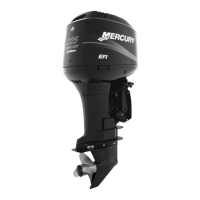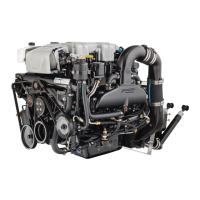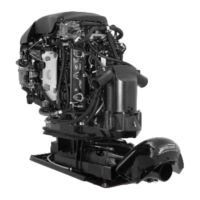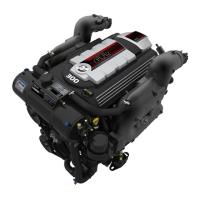POWERHEAD
Page 4A-46 90-883728 JULY 2001
Crankshaft
1. Inspect crankshaft to drive shaft splines for wear. (Replace crankshaft, if necessary.)
2. Check crankshaft for straightness – maximum runout: 0.006 in. (0.152 mm) (Replace
as necessary.)
3. Inspect crankshaft oil seal surfaces. Sealing surfaces must not be grooved, pitted or
scratched. (Replace as necessary.)
4. Check all crankshaft bearing surfaces for rust, water marks, chatter marks, uneven wear
and/or overheating. (Refer to “Connecting Rods”.)
5. If necessary, clean crankshaft surfaces with crocus cloth.
51847
a
b
c
c
a-Crankshaft Journals
b-Crocus Cloth
c-Work Cloth “Back-and-Forth”
WARNING
DO NOT spin-dry crankshaft ball bearing with compressed air.
6. Thoroughly clean (with solvent) and dry crankshaft and crankshaft ball bearing. Re-
check surfaces of crankshaft. Replace crankshaft, if surfaces cannot be properly
“cleaned up.” If crankshaft will be re-used, lubricate surfaces of crankshaft with light oil
to prevent rust. DO NOT lubricate crankshaft ball bearing at this time.
Crankshaft (and End Cap) Bearings
1. After cleaning crankshaft, grasp outer race of crankshaft ball bearing (installed on lower
end of crankshaft) and attempt to work race back-and- forth. There should not be exces-
sive play.
2. Lubricate ball bearing with light oil. Rotate outer bearing race. Bearing should have
smooth action and no rust stains. If ball bearing sounds or feels “rough” or has “catches,”
remove and discard bearing. (Refer to “Powerhead Removal and Disassembly - Crank-
shaft Removal and Disassembly”.)
Lower Ball
Bearing
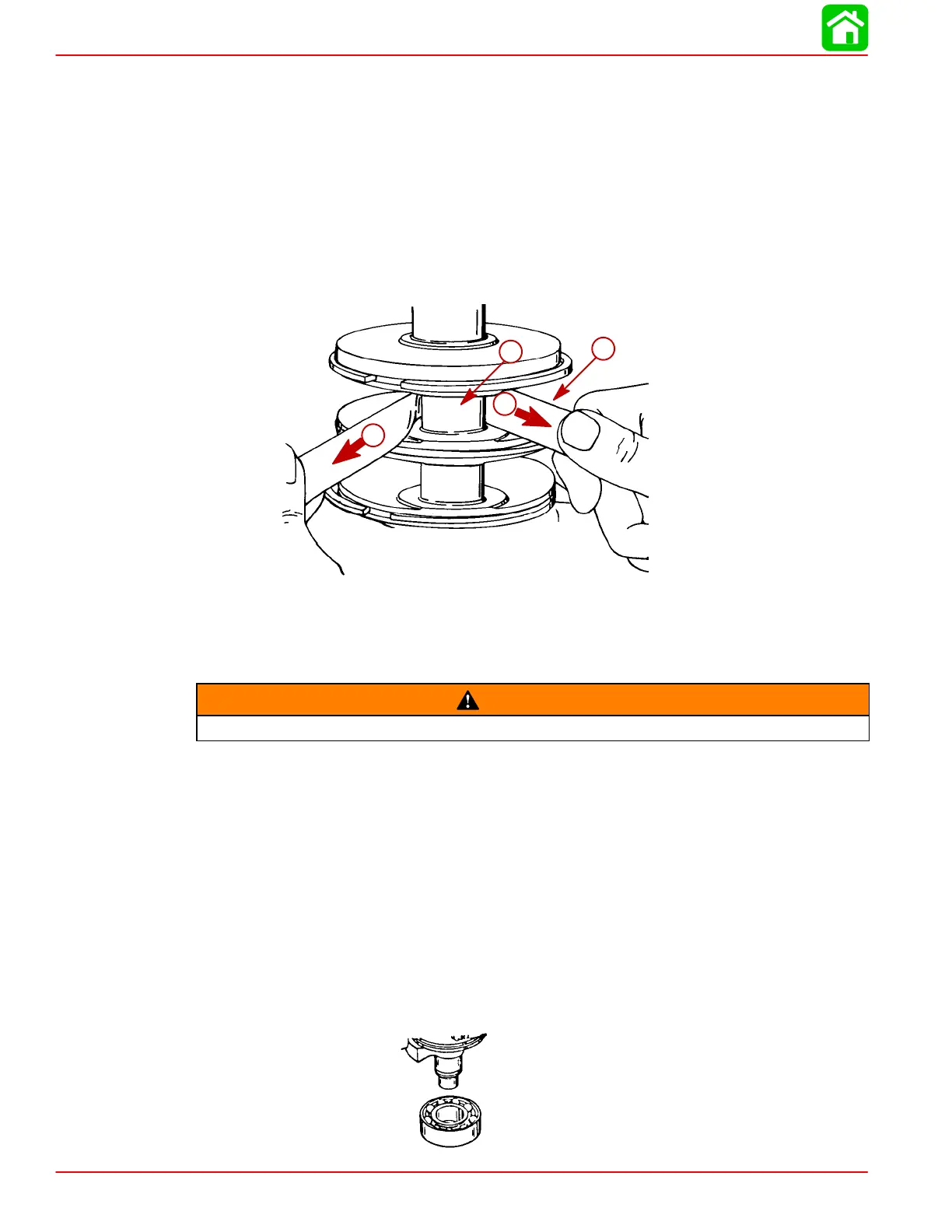